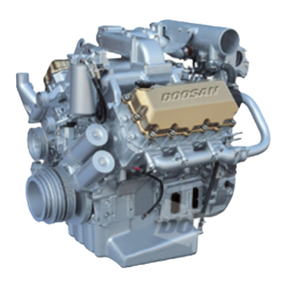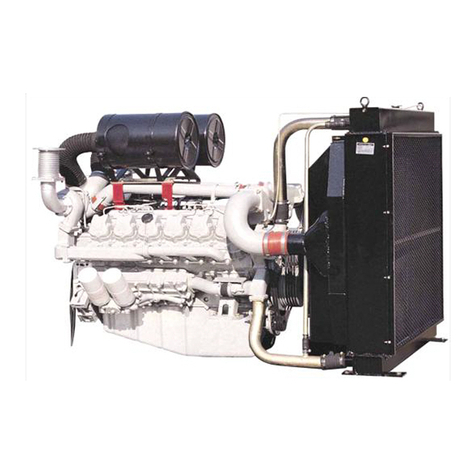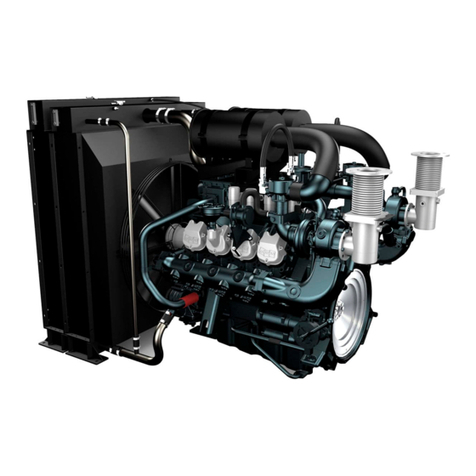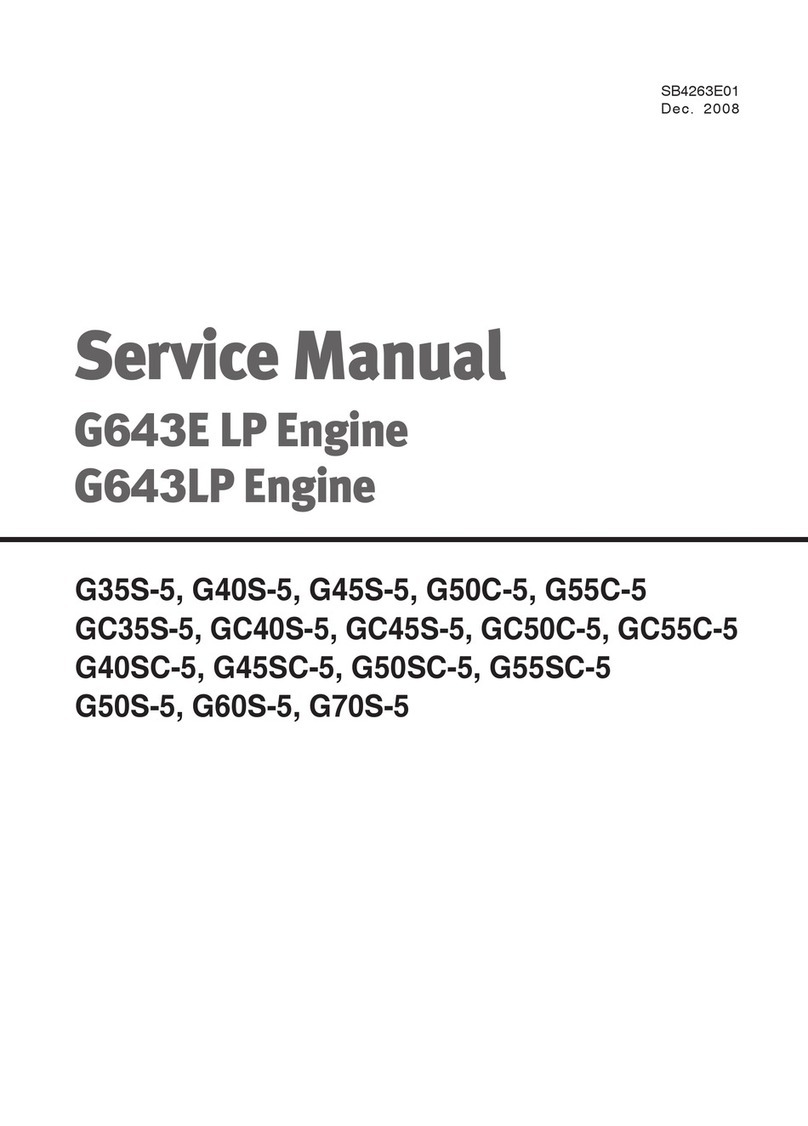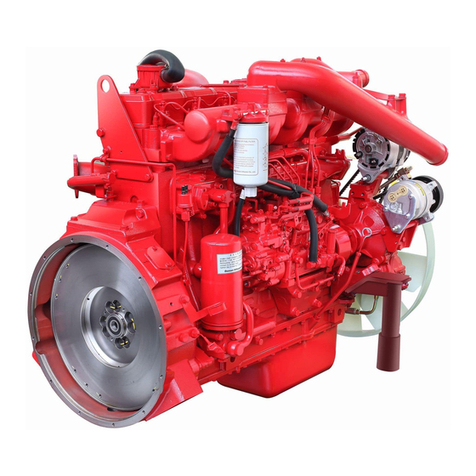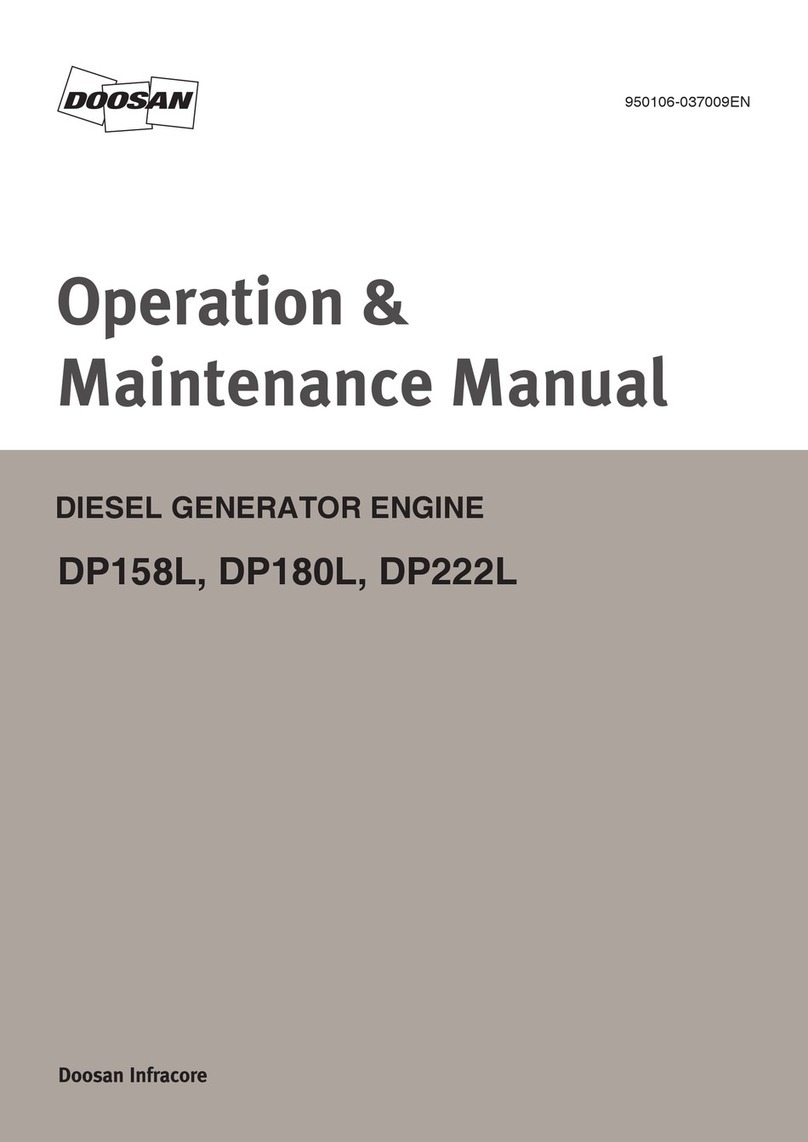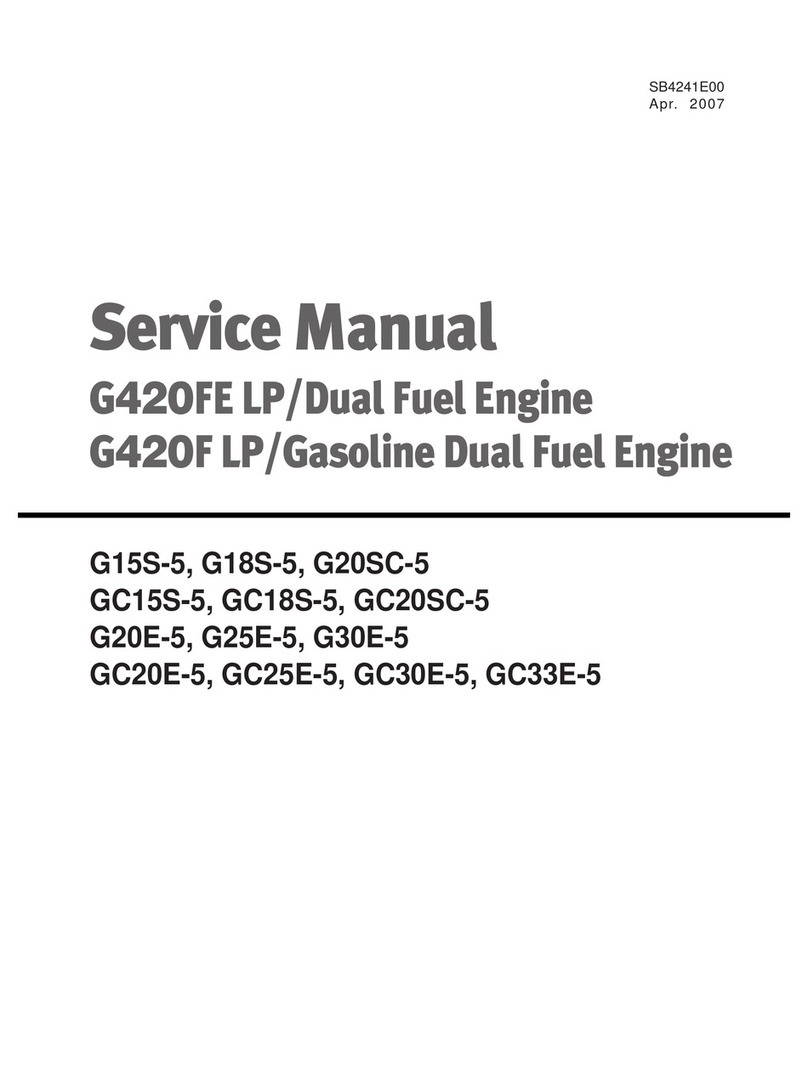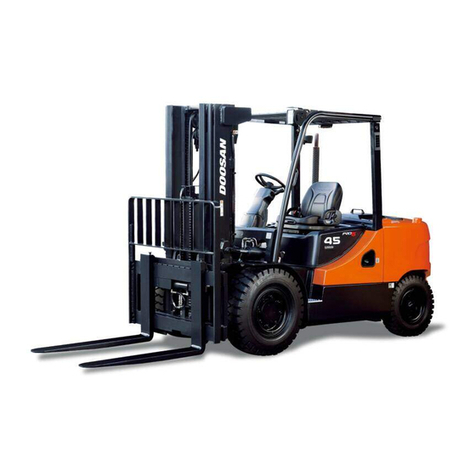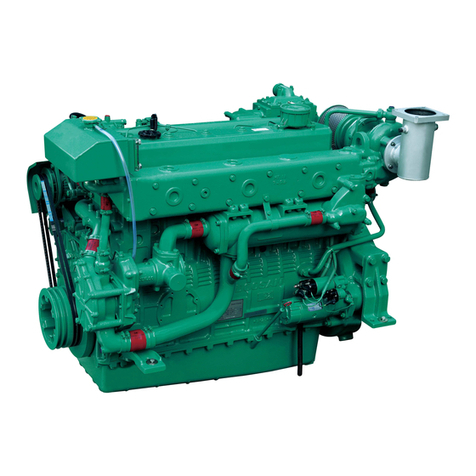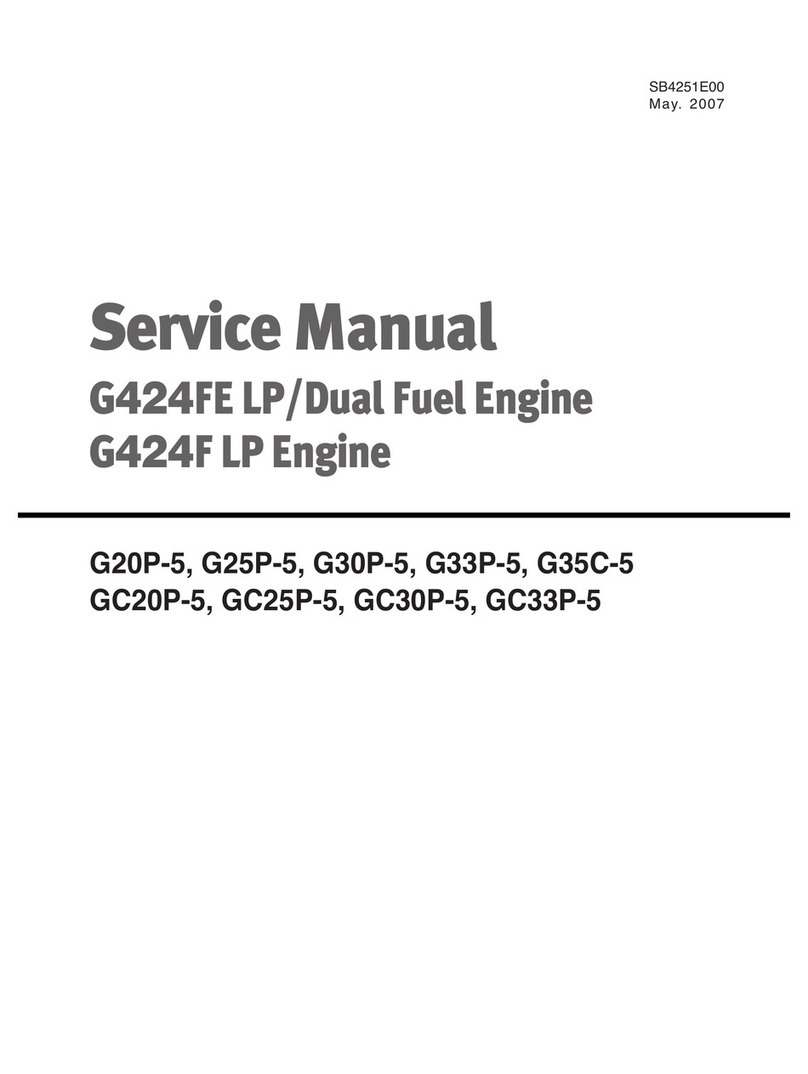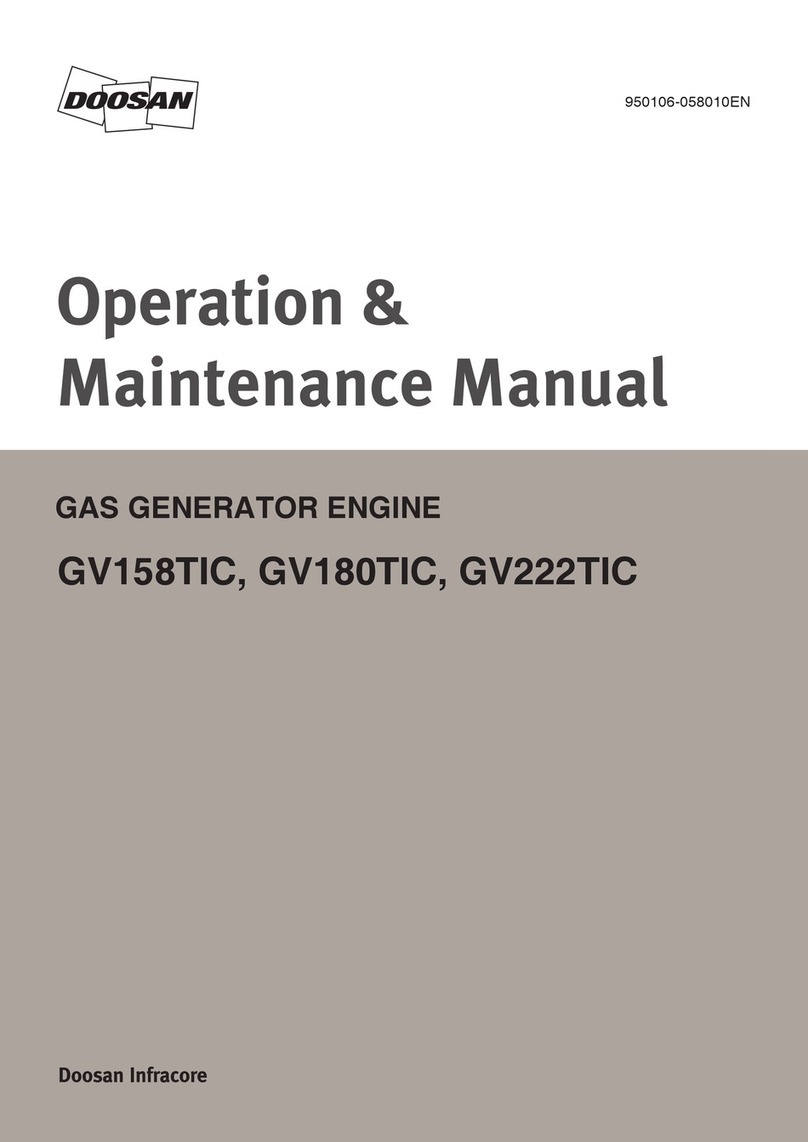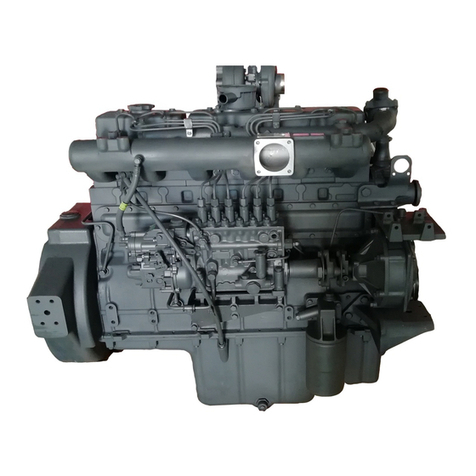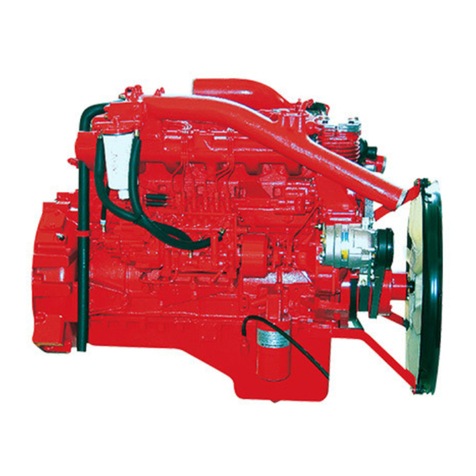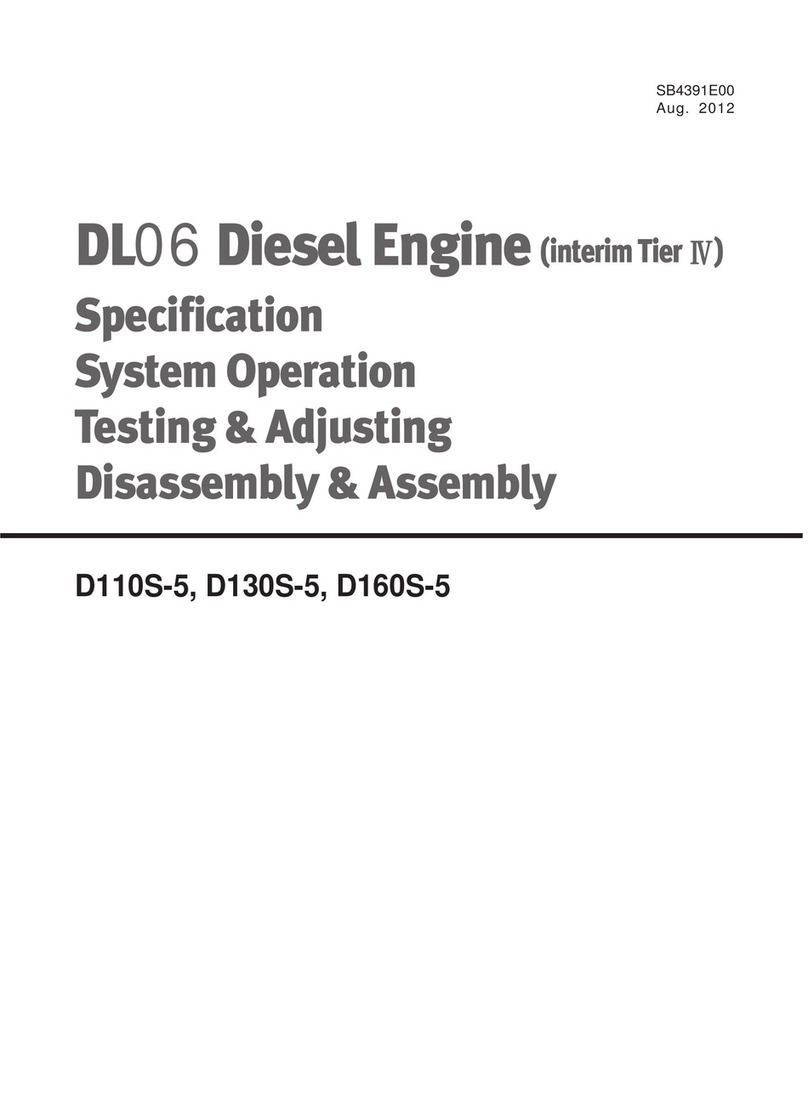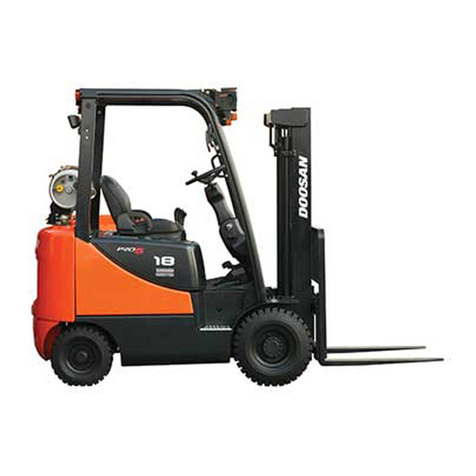- 4 -
EST Distributor Installation
(Engine Disturbed) ........................................66
Ignition Timing - EST System........................66
LP FUEL SYSTEM..................................................69
General Information............................................69
Electric Fuelock Models................................69
Converter.......................................................70
Fuel Tank.......................................................71
LP Relief Valve..............................................71
Carburetor.....................................................72
Tests or Adjustments...........................................73
Carburetor Adjustment ..................................73
Fuel System Leak Check..............................75
Recommendation For LP Fuel Systems.......76
LP Converter - Check, Clean........................77
Disassembly & Assembly....................................78
LP Gas Carburetor........................................78
LP Gas Fuelock.............................................80
LP Gas Converter..........................................81
LP FUEL SYSTEM (LOW EMISSION VERSION) ..83
General Description............................................83
System Overview ..........................................83
Fuel Lock (Electric) .......................................85
Pressure Regulator/Vaporizer.......................85
Pressure Regulator Theory of Operation.86
Variable Venturi Air/Fuel Mixer......................87
Variable Venturi Air/Fuel Mixer
Theory of Operation.................................88
Catalytic Muffler.............................................89
Engine Control (ECU) ...................................90
Oxygen Sensor..............................................91
Vacuum Switch..............................................91
Fuel Control Valve.........................................92
Tests or Adjustments...........................................93
LP Carburetor-Check, Clean.........................93
LP Converter-Check, Clen ............................94
Inspection of Fuel Lock Valve .......................94
Inspection of Fuel Control Valve ...................94
Inspection of Vacuum Switch (MAP).............95
Inspection of Oxygen Sensor........................95
Disassembly & Assembly....................................96
LP Converter.................................................96
GOVERNOR SYSTEM............................................97
General Description............................................97
Governor Operation............................................98
Adjustment Procedures ......................................99
LUBRICATION SYSTEM.......................................101
General Description..........................................101
Testing & Adjusting ...........................................102
Lubrication System Problems .....................102
Oil Pressure Check.....................................103
COOLING SYSTEM ..............................................104
General Description..........................................104
Testing & Adjusting ...........................................105
Cooling System Visual Inspection...............105
Cooling System Tests..................................105
Thermostat..................................................107
Cooling System Heat Problems..................108
Cooling System Recommendation..............108
Belt Adjustment............................................110
V-Belt Diagnosis..........................................110
Service Procedures...........................................111
Draining and Filling the Cooling System .....111
Flushing the Cooling System.......................112
Radiator Service..........................................112
Thermostat Replacement............................113
Water Pump Replacement ..........................114
Remove & Install Water Temperature Sender..115
BASE ENGINE SERVICE PROCEDURE..............116
Disassembled View (1 of 4)..............................116
Disassembled View (2 of 4)..............................117
Disassembled View (3 of 4)..............................118
Disassembled View (4 of 4)..............................119
Draining Fluids and Oil Filter Removal...............120
Engine Flywheel Removal................................121
Distributor Removal..........................................121
Ignition Coil Removal........................................122
Lift Bracket Removal.........................................122
Spark Plug Removal.........................................122
Intake/Exhaust Manifold Removal....................122
Crankshaft Pulley Removal ..............................123
Valve Rocker Arm Cover Removal...................123
Pushrod Cover Removal...................................123
Intake/Exhaust Manifold Disassemble
and Assemble...................................................124
Intake/Exhaust Manifold Clean and Inspect.....124
Water Pump Removal.......................................125
Valve Rocker Arm and Pushrod Removal ........125
Measuring Camshaft Lobe Lift..........................126
Valve Train Components Inspect
(Cylinder Head).................................................127
Valve Lifter Removal.........................................127
Cylinder Head Removal....................................128
Oil Pan Removal...............................................128
Oil Pump Removal............................................128
Oil Level Indicator and Tube Removal .............129
Engine Front Cover Removal...........................129
Measuring Crankshaft and Camshaft
Sprocket Runout...............................................130
Measuring Timing Sprocket Teeth Backlash.....130
Crankshaft Sprocket Removal..........................131
Camshaft Removal...........................................131
Crankshaft and Camshaft Sprocket Inspect.....131
Timing Gear Oil Nozzle Removal.....................132
Piston, Connecting Rod and Bearing
Removal............................................................132
LP Engine G430(3.0L) Index
